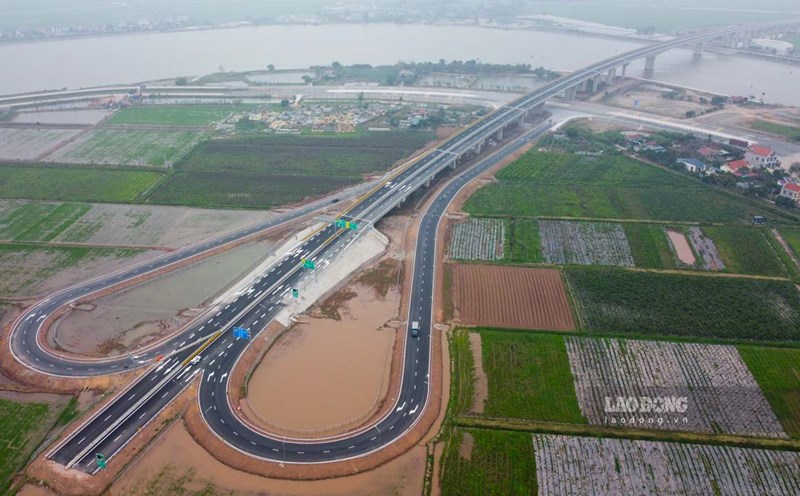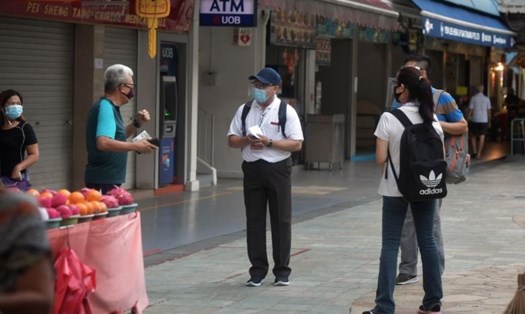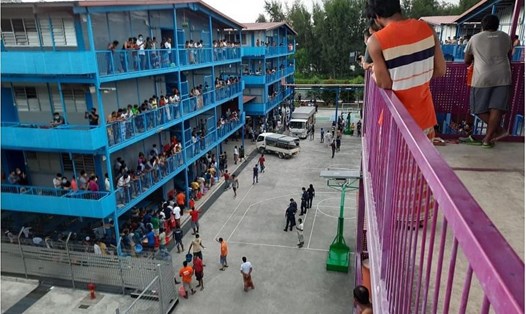As the "lion island" faces recession, under great pressure to revive the economy, officials have chosen selective quarantine measures to prevent the epidemic rather than widespread containment before. However, most of the workers are still restricted to cramped dormitories, Reuters reported.
There are not many options. We need to be realistic. The economy must continue to develop, said Leong How Nam, an infectious disease expert at Mount Queen Hospital.
The dormitories, home to more than 300,000 workers in industries such as construction and shipbuilding, with several in the same room, account for nearly 95% of the total of more than 57,400 COVID-19 cases in Singapore.
When detecting the spread of COVID-19 throughout workers' dormitories, authorities have strictly isolated, conducted extensive testing and nationwide lockdowns.
However, an average of 45 new cases have occurred daily in dormitories since authorities said last month that most residents had recovered or had no more SARS-CoV-2 testing results. In addition, Singapore recorded an average of 2 cases of community spread per day.
Facing this new outbreak, Singapore is betting on another direction instead of completely closing dormitories: Allowing workers to go to work but repeat testing, extending social distance with longer distances, closely monitoring and quickly isolating those close to patients.
The risk of silent spread still exists because very few new infections show symptoms, while PCR testing ( polymerase chain reaction) may not detect the virus at the time of taking samples.
Other measures include arranging fewer workers in dormitories and checking wastewater to trace viruses, applying more technology to monitor those with the disease.
Hsu Li Yang, an infectious disease expert at the National University of Singapore, said that the possibility of closing a series of dormitories is very low again and that measures to combat the COVID-19 epidemic will have more specific targets.
However, most workers can only move between dormitories and workplaces. "In addition to shuttle buses, we are not allowed to go anywhere else. The spirit is constantly tense, construction supervisor Sharif Uddin said. down 59% compared to the same period last year, construction is an industry heavily affected when dormitories are blocked.
When more dichction phrases appear, many workers are being quarantined for several weeks after returning to work. Some people are more afraid of a recurrence than of COVID-19.
It felt like I was in prison. We just want to return to normal life, work full-time to earn money to send back to our hometown," said construction worker Habibur Rahman, 25.
Instructions for installing Bluezone on your phone
Step 1: Access https://www.bluezone.gov.vn or go to the CHPlay ( Android) application store or Appstore (iOS) and type the keyword "Bluezone" in the search section.
Step 2: Select the application "Bluezone - Electronic page" of the Department of Informatics, Ministry of Information and Communications and install it.
Step 3: After downloading, the application will require permission to use Bluetooth. If Bluetooth is not yet open, pull the status bar and connect to Bluetooth; or go to Settings, select Bluetooth and turn it on.
Step 4: Open the application and allow Bluezone to access some necessary rights.
Install Bluezone to protect yourself, protect everyone!








